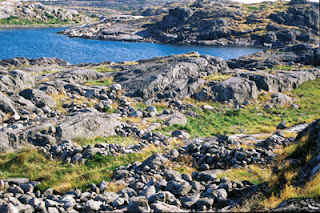Hello everyone!
The last couple of days I have started a small (yet unfinanced) research project aimed at applying the principles of LCA (Landscape Character Assessment) and HLC (Historic Landscape Character) in a 17th century context. While LCA and HLC is traditionally concerned with mapping the character of the present-day landscape and its historical components, this study will be based on characterising the landscape as it looked during the 17th century. This can more or less only be done in regions which were more or less entirely covered by consistent maps during the same period.
As explained in some of my other posts, Sweden has a world-unique collection of detailed large-scale geometrical maps from the first of half of the 17th century, which shows and describes the rural landscape before the agrarian revolution of the 18th century. Sadly, only parts of Sweden are covered by this material, and the amount of available maps also varies from region to region (the regions covered by these maps can be seen here). For this study, I have therefore chosen two neighboring parishes - Blidsberg and Dalum - in the hundred of Redväg (in Västra Götaland) which were almost completely mapped during the middle of the 17th century.
The maps from this region were made by a surveyor called Kettil Classon (Felterus), whose maps are quite rich in detail. Among other things, the maps often give valuable information concerning the vegetation and landforms of the area. Furthermore, the parishes of Blidsberg and Dalum lie in the river valley of Ätran, where the river itself plays - and has always played - a dominant role. It seems like the surveyor payed quite good attention to the river while making his maps, as it is possible to trace the geomorphological changes through a simple comparison between the historical maps and a modern orthophoto. The extensive meadows of the regions seem also to be relatively well mapped. This is quite unique, as the surveyors usually focused on documenting the arable fields and the location of individual farms. While this in some ways may reflect the experience and capability of the surveyor in this region, it is most likely rather due to external factors affecting the mapping process, such as weather conditions.
The natural starting point was therefore to start by georeferencing the 15 maps included in the study, in order to recreate the landscape of the 17th century in this region. As the quality of the maps from both parishes were generally high, the rectification process mostly included between 2-3 control points on maps of high accuracy. This meant that these maps were more or less just rescaled and refitted, and the rectification kept the original measurements of the surveyor more or less intact. Where inconsistencies were found in the maps, more control points were given - in places up to 12 - in order to not distort the original measurements, especially of the arable fields.
Still, the result is far from perfect, but only meets the general requirements of the study at hand, which is not aimed at providing highly detailed information but to provide a general picture of the landscape characteristics. In some places, adjacent maps do not fit each other perfectly. This becomes most clear when looking at the river, for which I sadly must blame the surveyor. Of course, the maps could have been given more control points in order to counteract this problem, but that went beyond the purpose of this study.
The combined georeferenced result was then draped over a 2 meter resolution DEM of the area, which made it possible to explore the topography of the 17th century landscape in Esri's ArcScene. This provides an excellent overview of the area, which gives a nice context to the further stages of this Landscape Character analysis.
The ArcScene visualisation of the georeferenced result. Here it is possible to see the ways in which the rural landscape was adapted to the topography of the area. Also, notice that the 17th century river sometimes makes strange bends over contemporary hills, diverting from the present day riverbed. This might indicate an inaccuracy in the historical maps, but may also illustrate that the meandering pattern has developed over the centuries, reforming the river channel.















